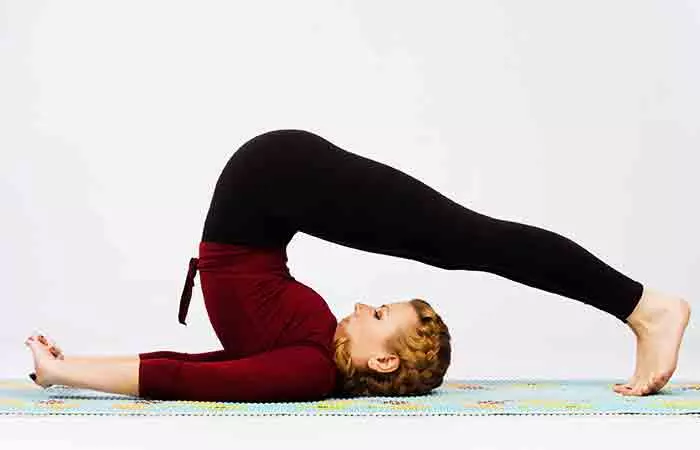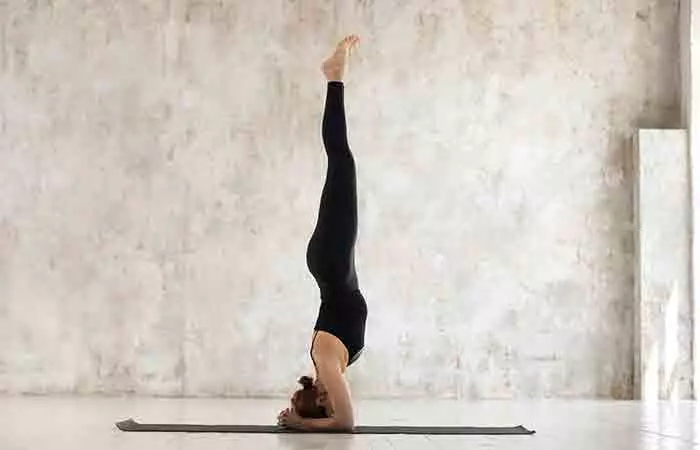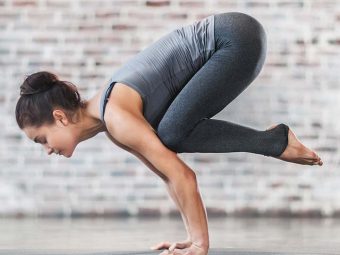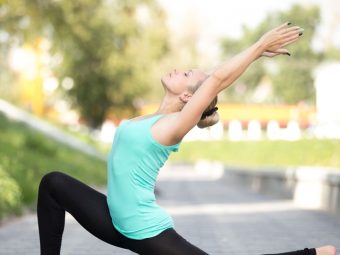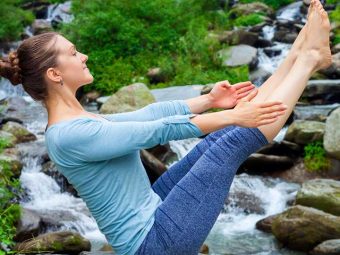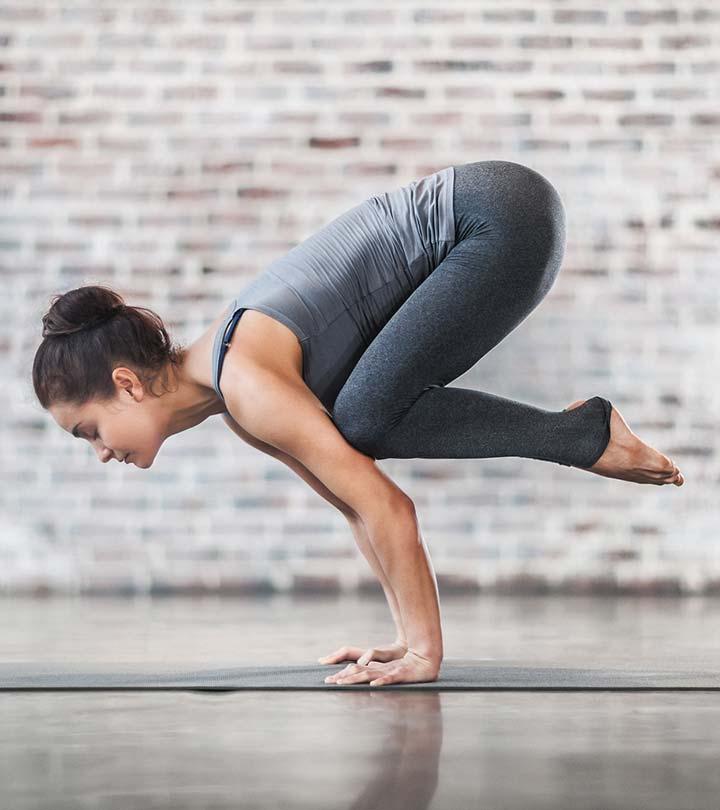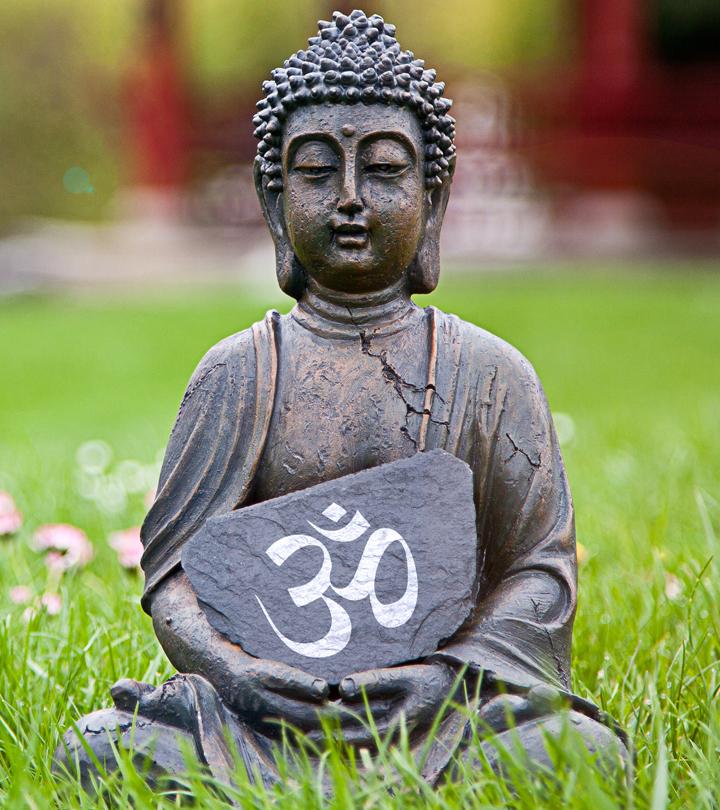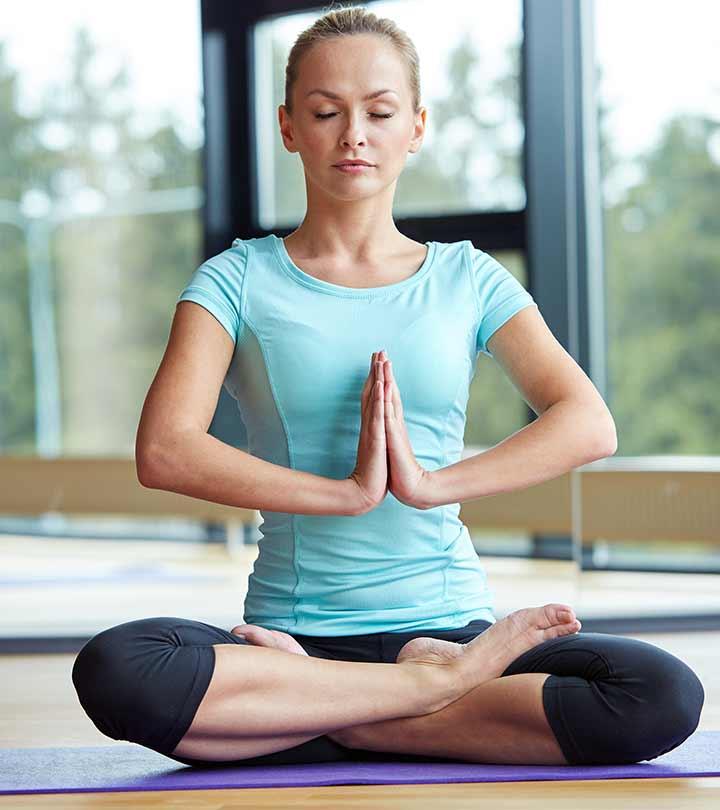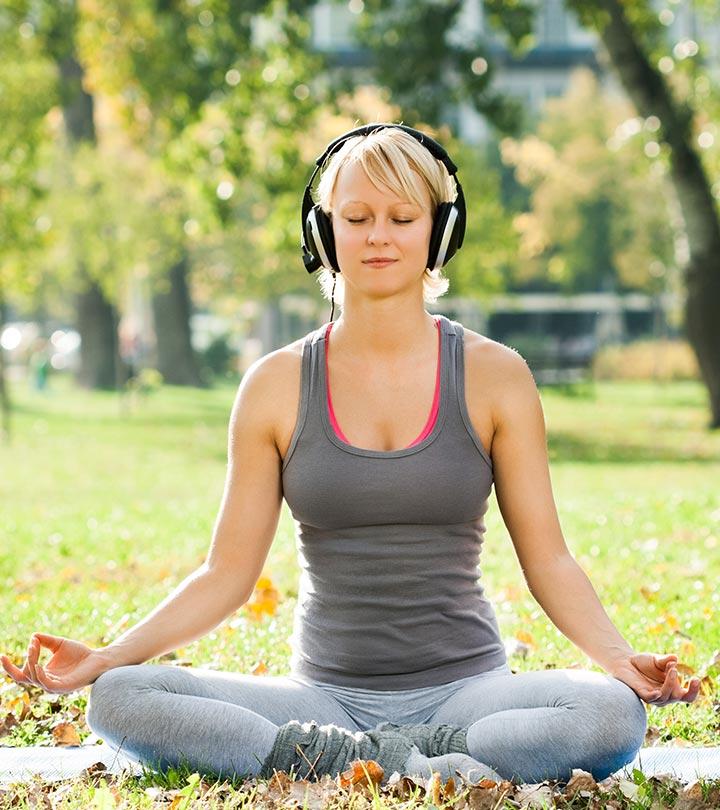8 Effective Yoga Poses To Increase Your Brain Power
Boost your analytical and decision-making ability with these posture-based techniques.
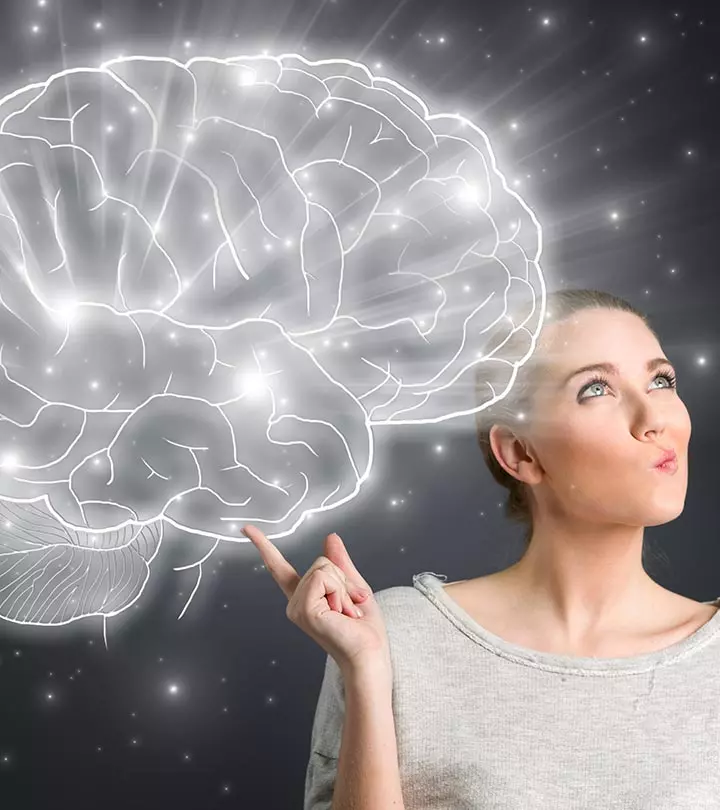
Image: istock
Your brain is the most sensitive yet important organ in your body. Like any other muscle, the brain also needs exercise to function effectively. So, how about trying yoga for brain power? It is certainly the best option out there. Yoga helps you ward off the factors that degenerate the brain, causing psychiatric disorders. In this article, we have listed the seven best yoga poses to up your brain’s capabilities and improve its functioning. Take a peak!
A cross-sectional online survey done on 2434 UK-based yoga practitioners found that yoga positively impacted physical and mental health conditions. 16% of them started yoga to manage their physical or mental health conditions. Further, 47% of the participants changed their motivation to practice yoga from general wellness and fitness to stress management and spirituality.
In This Article
Before that, let’s find out how to increase brain power by yoga.
Yoga To Increase Brain Power
Sirsasana
Your brain is a muscle and needs exercise for better functioning. Yoga is the best form of exercise that improves brain function. Stress and anxiety can cause your brain to malfunction, and that is what yoga can help avert. Yoga regulates the vagus nerve that deals with your body’s mood and stress levSirsasana (Headstand)els. It differs from other brain training yoga in its ability to facilitate proper breathing patterns that help a great deal in calming your body and invigorating your mind.
Yoga For Brain Power – 8 Effective Poses
- Padmasana (Lotus Pose)
- Vajrasana (Diamond Pose)
- Ardha Matsyendrasana (Half Spinal Twist Pose)
- Paschtimottanasana (Seated Forward Bend)
- Halasana (Plow Pose)
- Mayurasana (Peacock Pose)
- Sirsasana (Headstand)
- Bhramari pranayama (Bee Breathing)
1. Padmasana (Lotus Pose)
Padmasana or the Lotus Pose is synonymous with the great fables associated with the lotus. Lotus is considered a symbol of purity, enlightenment, and detachment. Padmasana is a meditative pose that works best when done in the morning and not necessarily on an empty stomach. Hold this intermediate level Hatha Yoga pose for at least 1-5 minutes.
Benefits: Padmasana relaxes the mind and calms the brain. It gives a good stretch to your ankles and knees, makes your hips more flexible, and improves your body posture. Padmasana awakens the chakras in your body and increases your awareness, and might work on your body’s neuroplasticity (1).
2. Vajrasana (Diamond Pose)
Vajrasana or the Diamond Pose is a kneeling exercise, usually accompanied by breathing exercises. Practicing the Vajrasana enables your body to become as strong as a diamond. Unlike other yoga asanas, Vajrasana can be practiced after a meal. Hold this beginner level Vinyasa Yoga pose for at least 5-10 minutes.
Benefits: Vajrasana aids proper digestion and with regular practice, eliminates constipation. It fights stomach disorders and combats acidity. The pose helps your body relax and increases blood circulation. It also improves the flexibility of the lower body and tones your muscles.
Doing yoga regularly may help to improve your intelligence, creativity, mental flexibility, problem-solving ability, and even mental stamina (2),(3).
To know more about the pose and how to do it, click here: Vajrasana
3. Ardha Matsyendrasana (Half Spinal Twist Pose)
Ardha Matsyendrasana or the Half Lord of the Fishes Pose is named after the sage Matsyendranath. It is a half spinal twist with numerous variations. The pose is part of the 12 basic Hatha Yoga asanas. Learning and practicing this asana either early in the morning on an empty stomach and clean bowels or 4-6 hours after a meal in the evening. Hold this basic level Hatha Yoga pose for at least 30-60 seconds.
Benefits: Ardha Matsyendrasana relieves stiffness in the back and invigorates the spine, which has has a therapeutic effect on the mind besides improving digestion. This pose increases the supply of oxygen to the lungs and detoxifies the internal organs. It also purifies the blood and improves its circulation.
To know more about the pose and how to do it, click here: Ardha Matsyendrasana
4. Paschtimottanasana (Seated Forward Bend)
Paschimottanasana or the Seated Forward Bend is a classic Hatha Yoga pose that is very simple to do. This asana gives your body a good stretch and concentrates on the back. Practice the pose in the morning on an empty stomach and clean bowels. If not possible in the morning, do it in the evening after 4-6 hours from your last meal. During practice, hold this basic Hatha Yoga pose for 30-60 seconds.
Benefits: Paschtimottanasana relieves mild depression and stress, gives your shoulders a good stretch, and activates your kidneys. Since this is a seated forward fold, it stimulates the spine and calms the mind. The asana reduces headache and fatigue and cures insomnia and high blood pressure. It might even improve mental acuity. It also increases appetite and reduces obesity.
A blogger trained in Iyenger yoga reflected on his personal experience with the forward bending practice. He was a skeptic initially, noting, “For many years, I was taught that forward bends have a ‘calming effect’ on the nervous system. I was so stiff at the time that I thought the teacher was nuts.” However, as time passed, he started seeing truth in what his teacher had told him, “Seasons change for one’s practice, and the more one practices, the faster that season changes. I can now say my forward bends bring me a substantial calmness internally… I’ve notice[d] it is making a difference in loosening my hips and groins (i).”
To know more about the pose and how to do it, click here: Paschtimottanasana
5. Halasana (Plow Pose)
Halasana or the Plow Pose uncovers the hidden capabilities of your body. The plow is a farming instrument used in many Asian countries that churns the soil in preparation for sowing seeds. The pose represents the shape of the plow and is an advanced yoga pose. Practice the pose in the morning on an empty stomach or in the evening with a gap of 4-6 hours from your last meal. Hold the pose for 30-60 seconds during practice.
Benefits: Halasana regulates metabolism and normalizes the blood sugar levels. This pose releases the strain in the back and enhances your posture. It also reduces stress and calms the brain. It gives your shoulder a good stretch and stimulates the underworking thyroid gland.
6. Mayurasana (Peacock Pose)
Mayurasana or the Peacock Pose resembles a peacock when it walks around with its feathers down. It seems like a complicated pose to do, but with a little practice, it gets comfortable. It is best to practice this pose in the morning on an empty stomach as your body has the energy generated from digesting the meal of the previous night. Hold this pose for 30-60 seconds during practice.
Benefits: Mayurasana detoxifies the body and keeps fever at bay. It strengthens your abdominal area, energizes your kidneys, and fights diabetes. It makes your spine stronger and improves posture. The asana improves concentration and coordination between the mind and the body, which might improve mental clarity and brain health.
 Quick Tip
Quick Tip7. Sirsasana (Headstand)
Transform your mind and body with a basic home yoga routine demonstrated in the video below. Increase your brain power and focus with some simple and easy-to-follow yoga poses. Check out the video to learn them.
Sirsasana or the Headstand is the king of all yoga poses. It requires complete inversion of your body and good upper body strength. Sirsasana needs a series of preparatory exercises over a period to do the asana. It is necessary that your stomach is empty and bowels clean to practice this asana. Try to hold the pose for at least 1-5 minutes. For beginners, it is safe to attempt the posture using the support of a wall.
Benefits: Sirsasana instantly calms your body. It stimulates the pituitary gland, strengthens the lungs, improves digestion, and cures asthma. It makes the arms and legs stronger and tones the abdominal organs.
 Trivia
TriviaTo know more about the pose and how to do it, click here: Sirsasana
8. Bhramari Pranayama (Bee Breathing)
It is named after the humble bee as it mimics the gentle humming sound of the bee as you exhale. It combines the therapeutic power of mindful breathing and sound vibrations. Practice bhramari pranayama in the morning or before bedtime in a peaceful environment. Do it on an empty stomach: allow a gap of 2-3 hours after a meal. You can do it 2-5 times in one sitting. Hold the pose for 15-30 seconds during practice.
Benefits: Its calming effects on the brain are confirmed by various studies. It helps reduce stress and alleviates anxiety (4). Vibrations from humming help loosen the mucus and reduce swelling in the nasal passages which may clear the sinuses.
Infographic: Top Yoga Poses To Boost Brain Power
A marvelous organ, the brain is capable of incredible things and its well-being is of utmost importance. Unfortunately, several factors contribute to the degeneration of the brain, resulting in mental disorders. Basic yoga strengthens and maintains mental dexterity. The infographic below will teach us the best yoga poses to boost brain power. Take a look! Illustration: StyleCraze Design Team
Your brain is like a muscle that needs to be exercised to work properly. Yoga for brain power is the most effective way to increase brain function. Your brain can malfunction as a result of stress and anxiety. The vagus nerve, which controls your body’s mood and stress levels, is regulated by yoga. It differs from other brain-improving workouts in that it encourages healthy breathing patterns, which can help you relax your body while also energizing your intellect. The yoga asanas listed above will help you broaden your mind and declutter your mind. So, try them out and reap the rewards.
Frequently Asked Questions
Why does the brain degenerate?
The brain weakens mainly because of stress, anxiety, and disease. It can also be a result of aging.
How often to practice yoga to improve brain power?
Practice yoga every day for about 20 minutes to improve your brain capabilities.
Yoga is a simple and safe way to invigorate your mind and keep it running. Save yourself from a waning memory and a dull mind by trying the asanas mentioned in this article. Get going!
Can yoga cure brain fog?
Since yoga can help improve concentration and reduce anxiety levels, it may help reduce the symptoms of brain fog, like lack of focus, sleeplessness, and improve mental agility, etc.
Can yoga regenerate brain cells?
Yoga, especially meditation, may help improve brain health and improve mindfulness. It may help encourage the growth of new neurons and help them connect with the existing neurons (5).
Does pranayama increase brain power?
Pranayama may help calm your mind, increase concentration, and improve your general well-being. Studies found that the anulom vinulom pranayama could help improve cognitive function, reduce anxiety, and improve general well-being and parasympathetic activity (6).
Key Takeaways
- Regular yoga practice is crucial. Practice in a calm, relaxed setting, and be mindful of your limitations. Pay attention to your body.
- Include particular poses, such as Viparita Karani, Matsyasana, and Sarvangasana.
- Pay attention to deep breathing and maintaining balance while performing the asanas.
- For optimal brain health, adopt a healthy diet and sleeping schedule along with it.
Personal Experience: Source
StyleCraze's articles are interwoven with authentic personal narratives that provide depth and resonance to our content. Below are the sources of the personal accounts referenced in this article.
i. Forward bends calm the mind,https://iyengarhomepractice.wordpress.com/2015/01/10/forward-bends-calm-the-mind/#comments
References
Articles on StyleCraze are backed by verified information from peer-reviewed and academic research papers, reputed organizations, research institutions, and medical associations to ensure accuracy and relevance. Read our editorial policy to learn more.
- Neuroprotective effects of yoga practice: age-, experience-, and frequency-dependent plasticity
https://www.ncbi.nlm.nih.gov/pmc/articles/PMC4428135/ - Effect of Yoga on Memory and Problem Solving Ability of University Players
https://jusst.org/wp-content/uploads/2021/05/Effect-of-Yoga-on-Memory-and-Problem-Solving-Ability-of-University-Players-1.pdf - Effects of Yoga on Mental and Physical Health: A Short Summary of Reviews
https://www.ncbi.nlm.nih.gov/pmc/articles/PMC3447533/ - Effects Of Bhramari Pranayama On Health – A Systematic Review
https://www.ncbi.nlm.nih.gov/pmc/articles/PMC5755957/ - Meditation and Yoga can Modulate Brain Mechanisms that affect Behavior and Anxiety-A Modern Scientific Perspective
https://www.ncbi.nlm.nih.gov/pmc/articles/PMC4769029/ - Effect of short-term practice of pranayamic breathing exercises on cognition anxiety general well being and heart rate variability
https://pubmed.ncbi.nlm.nih.gov/24968492/








